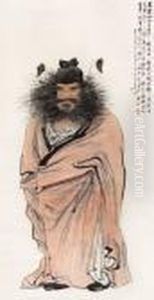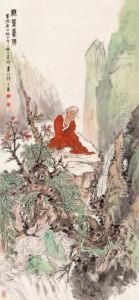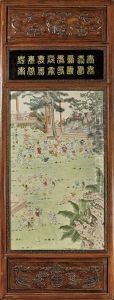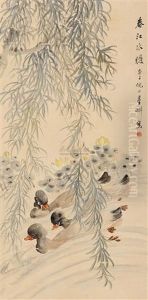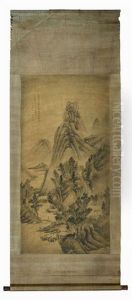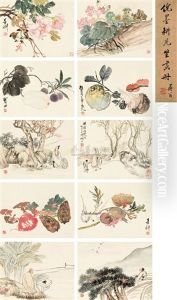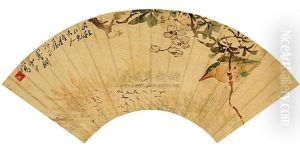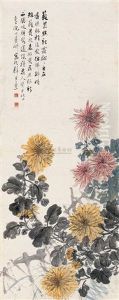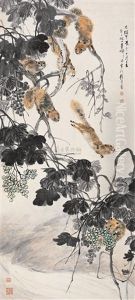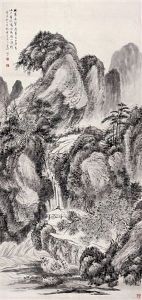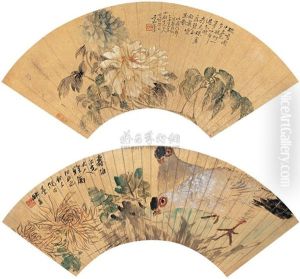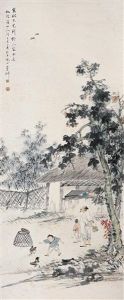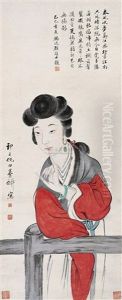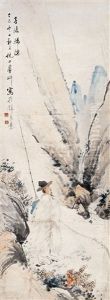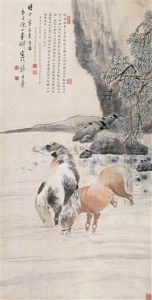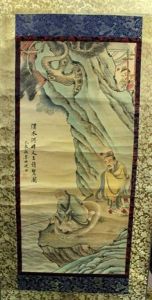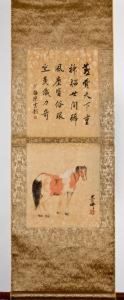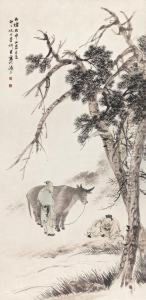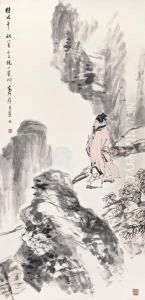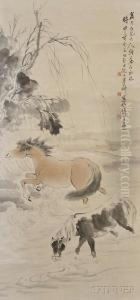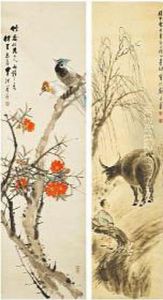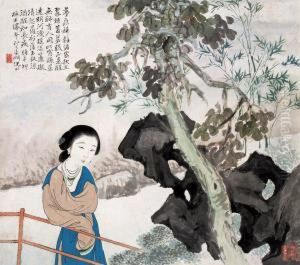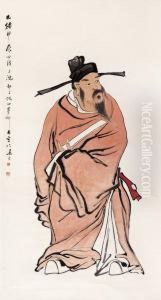Ni Tian Paintings
Ni Tian was a notable Chinese artist known for his exceptional skills in traditional Chinese painting, particularly in the genres of landscape and bird-and-flower painting. Born in the late Qing Dynasty, Ni Tian's artistic journey was deeply influenced by the rich cultural and artistic heritage of China. He was born in 1855 in Xiuning, Anhui Province, into a family with a strong appreciation for the arts, which played a significant role in shaping his early interest and eventual career path in painting.
Ni Tian's artistic talent became evident at a young age, and he was fortunate to study under several renowned masters of Chinese painting. Among his teachers, the influence of Chen Shaomei, a master in traditional Chinese painting, was particularly significant. Under such guidance, Ni Tian honed his skills in various traditional techniques and styles, focusing on the intricacies of brushwork and the subtle use of ink and color.
Throughout his life, Ni Tian dedicated himself to perfecting his art, becoming a prominent figure in the world of traditional Chinese painting. His works are characterized by their meticulous detail, vibrant life, and the ability to convey the essence of his subjects with seemingly effortless grace. His landscapes are noted for their serene beauty and depth, while his bird-and-flower paintings are celebrated for their liveliness and realism.
Ni Tian's contribution to Chinese art goes beyond his own creations. He was also a respected teacher, passing on his knowledge and skills to a new generation of artists, thus ensuring the continuation and evolution of traditional Chinese painting techniques. His influence is evident in the works of his students and in the wider appreciation and understanding of Chinese art.
Sadly, Ni Tian passed away in 1919, but his legacy lives on. Today, his works are highly prized by collectors and are considered important cultural treasures. They can be found in major museums and private collections around the world, serving as a testament to his mastery and enduring influence on the art world.
